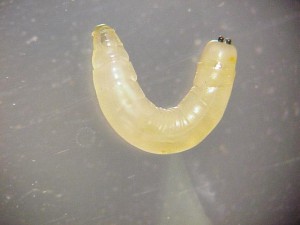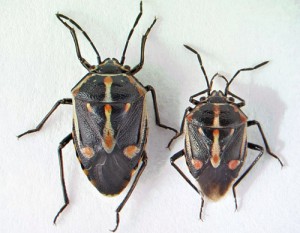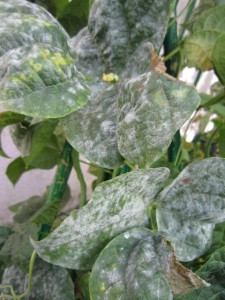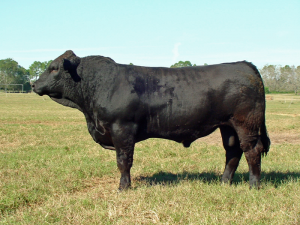
EDIS is the University of Florida’s Official website with fact sheets available to download on a wide variety of topics for free.
The University of Florida IFAS Extension offers a database of fact sheets available for free download on the Internet called EDIS (Electronic Data Information Source) that has many publications of interest to farmers and ranchers in Northwest Florida. Each fact sheet has a PDF or printer friendly link in the top left corner. The following are just a few of the new fact sheets that were recently added to the collection pertaining to commercial agriculture production. http://edis.ifas.ufl.edu
Insects
 Bermudagrass Stem Maggot: A New Pest in Florida
Bermudagrass Stem Maggot: A New Pest in Florida
Bermudagrass is a dominant hay crop in Florida. Now, hay producers are facing a new emerging pest problem in bermudagrass and stargrass production fields. The bermudagrass stem maggot, is a new exotic invasive fly. It was first discovered damaging bermudagrass pasture and hay fields in Georgia. The identification of the fly was the first record of this species in North America, and it has the potential to become a serious pest of bermudagrass and stargrass in Florida. This 2-page fact sheet was written by Ann Blount, Tim Wilson, Jay Ferrell, Russ Mizell, and Jonael Bosques, and published by the UF Department of Agronomy, June 2014.
http://edis.ifas.ufl.edu/ag384
Bagrada Bug, Painted Bug, Bagrada Hilaris (Burmeister) (Insecta: Hemiptera: Pentatomidae)
 The bagrada bug is a pest of concern to Florida agriculture, and there are several similar species with which it may be confused. Bagrada bugs have been detected on plant material in trucks traveling across state borders. Twelve interceptions have been made from 2011-2013 at the FDACS agricultural inspection stations along the interstate at the Florida border. Due to the number of recent interceptions, and the ability of this pest to feed on many plants, the bagrada bug has potential to establish in Florida. Therefore, monitoring, surveillance, and educational efforts have begun in Florida to facilitate early detection and rapid response as the spread of the bagrada bug continues to other areas. This 7-page fact sheet was written by Eric LeVeen and Amanda C. Hodges, and published by the UF Department of Entomology and Nematology, July 2014.
The bagrada bug is a pest of concern to Florida agriculture, and there are several similar species with which it may be confused. Bagrada bugs have been detected on plant material in trucks traveling across state borders. Twelve interceptions have been made from 2011-2013 at the FDACS agricultural inspection stations along the interstate at the Florida border. Due to the number of recent interceptions, and the ability of this pest to feed on many plants, the bagrada bug has potential to establish in Florida. Therefore, monitoring, surveillance, and educational efforts have begun in Florida to facilitate early detection and rapid response as the spread of the bagrada bug continues to other areas. This 7-page fact sheet was written by Eric LeVeen and Amanda C. Hodges, and published by the UF Department of Entomology and Nematology, July 2014.
http://edis.ifas.ufl.edu/in1041
Weeds
 Biology and Management of Common Purslane in Fruiting Vegetables, Cucurbits, and Strawberries
Biology and Management of Common Purslane in Fruiting Vegetables, Cucurbits, and Strawberries
Purslane occurs throughout Florida. It produces thousands of seeds per plant, which germinate readily, but can also persist in the soil for up to 15 years. Vegetative shoot fragments can survive on the soil surface for extended periods of time, then re-root when exposed to moisture and can even flower and produce seeds after they have been pulled from the soil. This characteristic enables purslane to persist and spread following cultivation. This 4-page fact sheet was written by Nathan S. Boyd, Andrew W. MacRae, Rick Kelly, and Ixchel M. Hernandez, and published by the UF Department of Horticultural Sciences, July 2014.
http://edis.ifas.ufl.edu/hs1238
 Diseases
Diseases
Management of Powdery Mildew in Beans
Powdery mildew is one of the most commonly occurring diseases on many types of beans. Although the causal organism rarely causes extensive damage, significant yield losses were reported in Columbia County when infection occurred in dry beans prior to flowering. Accurately identifying this disease and immediately taking action for control are critical to effectively prevent spread of powdery mildew in order to reduce significant losses of yield and quality. This 4-page fact sheet was written by Qingren Wang, Shouan Zhang, and Teresa Olczyk, and published by the UF Department of Plant Pathology, June 2014.
http://edis.ifas.ufl.edu/pp311
Livestock
Cow Math: Using Weaning Weight to Estimate Cowherd Productivity
“You can’t get where you’re going unless you know where you are.”
The ability to measure performance is a key component in all beef cow operations, and measuring production efficiency is becoming increasingly important. Regardless of size, producers must be able to identify the current status of their operation in order to make adjustments toward improvement. Identifying and culling the cows within the herd that are less efficient at producing a weaned calf in the environment and management system used on the ranch can be a powerful tool to improve the herd. This 8-page fact sheet was written by Phillip Lancaster and John Arthington, and published by the UF Department of Animal Science, April 2014.
http://edis.ifas.ufl.edu/an129
 The Florida Bull Test, 2013-2014
The Florida Bull Test, 2013-2014
The 2013-2014 Florida Bull Test was a 112-day performance test and a breeding soundness evaluation of each bull that qualified for the auction. Table 1 summarizes feed efficiency data; Table 2 individual feed intake and feed efficiency; and Table 3 individual animal performance. This 10-page fact sheet was written by Vitor R. G. Mercadante, G. Cliff Lamb, and Nicolas DiLorenzo, and published by the UF Department of Animal Sciences, May 2014.
http://edis.ifas.ufl.edu/an301
Is It Worth Switching from Natural Service to Artificial Insemination? A Comparison of Reproductive Performance and Profitability in Dairy Herds
Reproductive efficiency is a key determinant of dairy cow profitability. A considerable portion of dairy producers in the United States still use NS in at least part of their breeding program. This 3-page fact sheet presents the results of papers that compared the reproductive performance and profitability of dairy cows submitted to natural service or a combination of timed AI and natural service. Written by Klibs N. Galvão, Eduardo S. Ribeiro, and Jose Eduardo P. Santos, and published by the UF Department of Veterinary Medicine-Large Animal Clinical Sciences, June 2014.
http://edis.ifas.ufl.edu/vm200
- Northwest Florida Beef Cattle Conference & Trade Show – February 11 - December 19, 2025
- Friday Feature:The Sears Catalog –How Rural America Shopped before the Internet - December 19, 2025
- November 2025 Weather Summary & Winter Outlook - December 5, 2025
